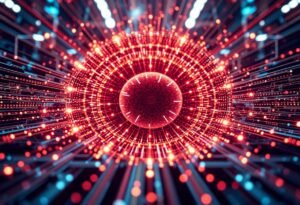Innovations in smart grid technology are revolutionizing the way renewable energy is integrated into our power systems. These advancements not only enhance the efficiency of energy distribution but also promote a sustainable future. This article explores important innovations in smart grid technology as they relate to renewable energy.
Advanced Metering Infrastructure in Smart Grids
Advanced metering infrastructure (AMI) represents a crucial innovation in smart grid technology. By enabling two-way communication between utility companies and consumers, AMI allows for real-time monitoring of energy consumption. This integration helps optimize energy distribution and enhances the understanding of demand patterns. As a result, utilities can better manage fluctuations in renewable energy production, such as solar and wind. The effectiveness of AMI has demonstrated reduced operational costs and improved energy efficiency, significantly benefiting both consumers and providers.
Integration of Energy Storage Systems
Energy storage systems are vital for overcoming the intermittent nature of renewable energy sources. Innovations in battery technology, such as lithium-ion and flow batteries, have made it feasible to store excess energy generated during peak production times. These systems can then release energy during high demand periods, thus stabilizing the grid. By enhancing the resilience of smart grids, energy storage integrates seamlessly with solar and wind systems, allowing for a more reliable and versatile energy supply. This innovation has fundamentally changed the dynamics of energy management and consumption.
Smart Sensors and IoT Implementation
The incorporation of smart sensors and Internet of Things (IoT) technology into smart grids has transformed how energy is monitored and managed. These sensors provide real-time data on energy usage and grid conditions, enabling utilities to respond quickly to issues and optimizing energy distribution. Moreover, the use of IoT allows for more efficient maintenance schedules, as predictive analytics can identify potential failures before they occur. This proactive approach leads to reduced downtime and enhanced grid reliability, ultimately supporting the wider adoption of renewable energy.
Decentralized Energy Generation and Microgrids
Decentralization in energy generation is a prominent trend within smart grid technology. Microgrids facilitate localized energy generation and consumption, empowering communities to produce their renewable energy. By utilizing solar panels and wind turbines, these small-scale grids operate independently or in tandem with the larger grid, providing resilience against outages. Innovations in microgrid control technologies enhance their ability to operate smoothly, ensuring the reliable integration of renewable energy sources and contributing to energy independence.
Blockchain for Energy Transactions
The emergence of blockchain technology is altering energy transactions within smart grids. By utilizing a decentralized ledger, blockchain enables secure peer-to-peer energy trading between consumers. This innovation not only reduces transactional costs but also encourages the use of renewable energy by allowing individuals to sell excess generated energy directly to their neighbors. The transparency and security of blockchain further foster trust in energy transactions, propelling the adoption of renewables in local communities.
AI and Machine Learning Applications in Smart Grids
Artificial intelligence and machine learning technologies are becoming integral to optimizing smart grids. These innovations enable advanced data analytics to predict energy consumption trends, manage supply and demand variances, and enhance grid security. By analyzing vast amounts of data, AI algorithms can suggest operational improvements and predict peak usage times, thus allowing utilities to operate more efficiently. The ability to quickly adapt to changing conditions significantly supports the integration of renewable energy into the grid, ensuring a balance between supply and demand.
Disclaimer: This article is for informational purposes only and does not constitute professional advice.





















